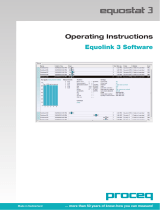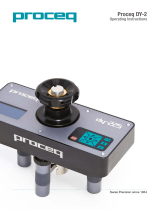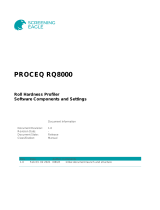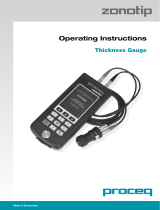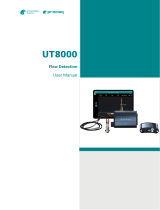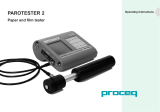ZOL1150 - Manual
15. March 2022 © Copyright 2022, PROCEQ SA
Content
1 Introduction .............................................................................................................1
1.1 Application areas ................................................................................................... 1
1.2 Key features .......................................................................................................... 1
1.3 Versions ................................................................................................................ 1
1.4 Scope of this document .......................................................................................... 1
2 Safety information ..................................................................................................2
2.1 Symbols used ........................................................................................................ 2
2.2 Safety notes and hints............................................................................................ 2
3 Scope of Delivery ....................................................................................................3
4 Device Overview .....................................................................................................4
4.1 Connection technology........................................................................................... 4
4.2 Measuring head technology ................................................................................... 5
5 Setting up ................................................................................................................6
5.1 Connections and Signals ....................................................................................... 6
5.2 Connector pin assignment and signals ................................................................... 7
5.3 Mounting of the device ......................................................................................... 10
5.4 Dimensional drawings .......................................................................................... 13
5.5 Starting up ........................................................................................................... 15
6 Z-Axis Control .......................................................................................................16
7 Webinterface .........................................................................................................18
7.1 Getting started ..................................................................................................... 18
7.2 IP address ........................................................................................................... 18
7.3 Main Page ........................................................................................................... 19
7.4 Calibrate page ..................................................................................................... 21
7.5 Settings page ....................................................................................................... 23
8 Measurements .......................................................................................................25
8.1 General................................................................................................................ 25
8.2 Pass/Fail .............................................................................................................. 25
9 Calibration .............................................................................................................26
9.1 Calibration procedure ........................................................................................... 26
9.2 Calibration plate ................................................................................................... 26
9.3 Cleaning the calibration plate ............................................................................... 26
9.4 Replacing the calibration plate ............................................................................. 27
10 Protocol Specification ..........................................................................................28
10.1 Introduction .......................................................................................................... 28
10.2 Protocol ............................................................................................................... 28
11 Maintenance and Cleaning ...................................................................................35
11.1 Maintenance and cleaning work that can be carried out by the user ..................... 35
11.2 Cleaning .............................................................................................................. 35
11.3 Fault/Error diagnosis ............................................................................................ 35
12 Technical Specification ........................................................................................36




















